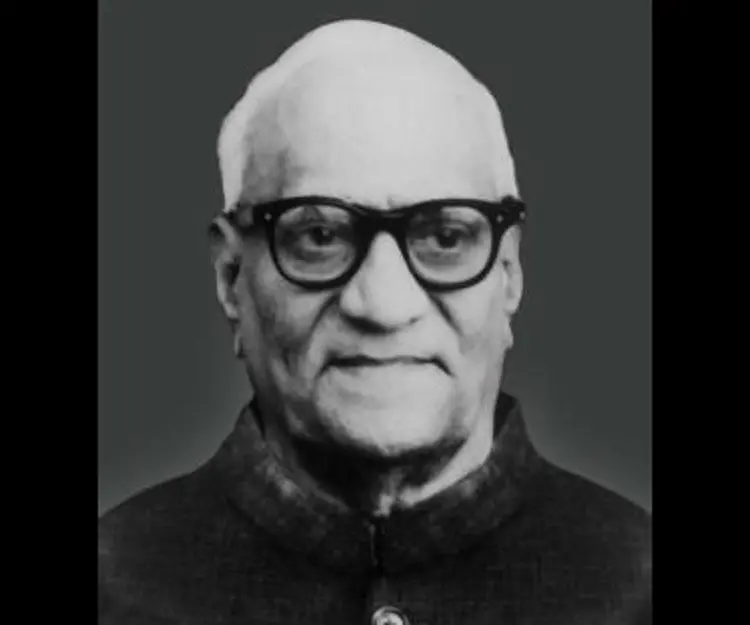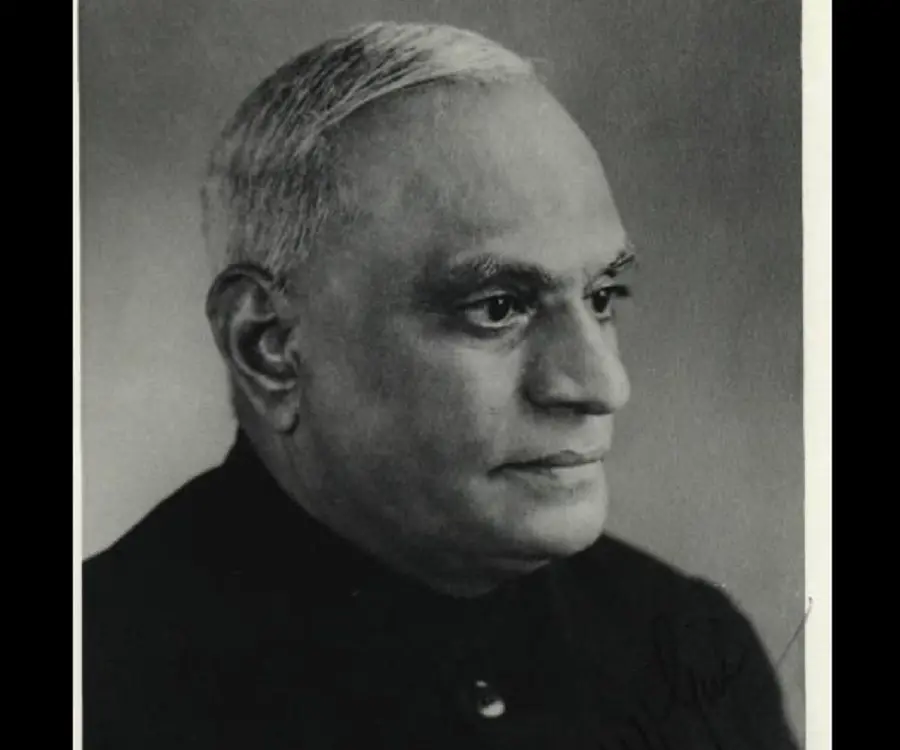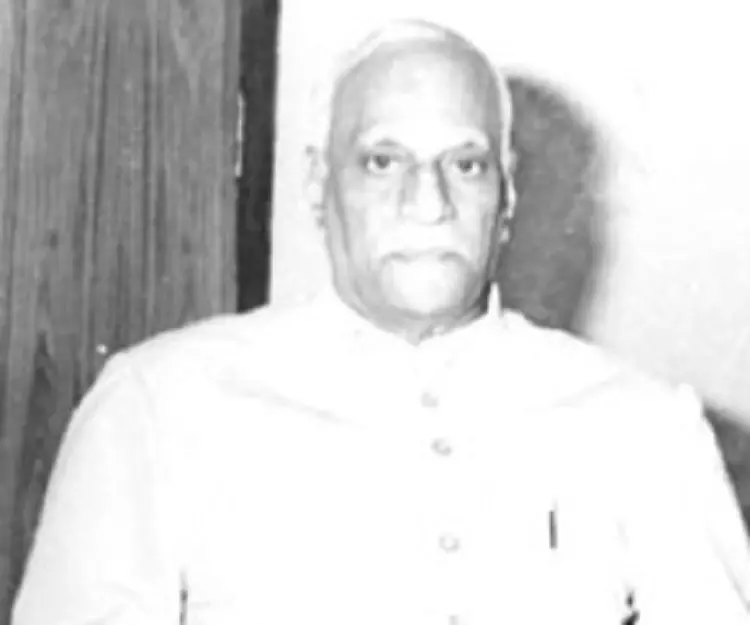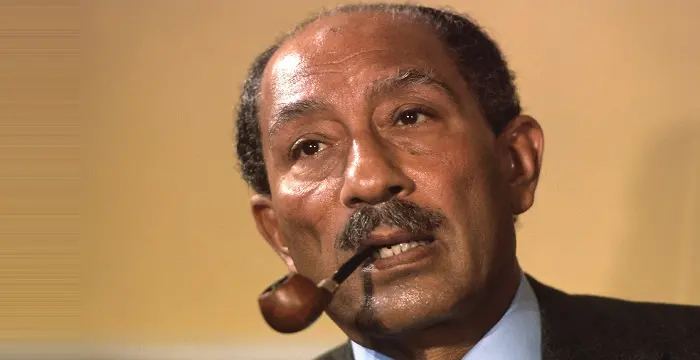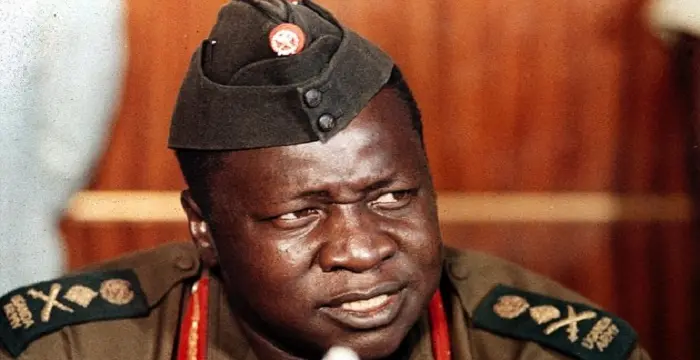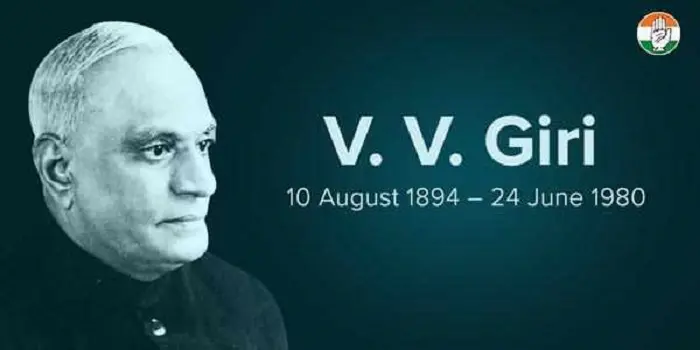
V. V. Giri - Fourth President of India, Life Achievements and Family
V. V. Giri's Personal Details
V
| Information | Detail |
|---|---|
| Birthday | August 10, 1894 |
| Died on | June 24, 1980 |
| Nationality | Indian |
| Famous | Leaders, Political Leaders, Presidents, Fourth President of India |
| Birth Place | Berhampur |
| Political Ideology | Political party - Independent |
| Gender | Male |
| Sun Sign | Leo |
| Born in | Berhampur |
| Famous as | Fourth President of India |
| Died at Age | 85 |
V. V. Giri's photo
Who is V. V. Giri?
V. V. Giri, was the fourth President of the Republic of India. Born in Orissa, his parents were active participants in the Indian independence movement. While a student of law at Dublin, Ireland, he took keen interest in the ‘Sin Fien’ Movement and was eventually expelled from the country. On returning to India, he joined the budding labour movement. He became General Secretary and then eventually, the President of the All-India Railwaymen’s Federation. He was also elected twice as President of the All-India Trade Union Congress. When the Congress Party formed a government in Madras state, he was Minister of Labour and Industries. He returned to the labour movement briefly when the Congress government resigned and launched the Quit India Movement. After India became independent, he was appointed High Commissioner in Ceylon and in 1952 was elected to the Lok Sabha. He was made Minister of Labour in the central government but resigned in 1954. Next, he was appointed successively to the Governorships of Uttar Pradesh, Kerala, and Karnataka. In 1967, he was elected Vice President of India. When President Zakir Husain died two year later, he became Acting President and decided to contest for Presidency. Supported by the then Prime Minister Indira Gandhi, he won the position by a narrow margin. He was later succeeded in office by Fakhruddin Ali Ahmed.
// Famous Political Leaders
Edi Rama
Edi Rama is the current Prime Minister of Albania. Check out this biography to know about his childhood, life, achievements, works & timeline.
Khalifa bin Zayed Al Nahyan
Sheikh Khalifa bin Zayed Al Nahyan is the current President of the United Arab Emirates (UAE). Check out this biography to know about his birthday, childhood, family life, achievements and fun facts about him.
Leo Varadkar
Cam Leo Varadkar is the current Taoiseach—the Prime Minister—of the Republic of Ireland. Check out this biography to know about his childhood, family life, achievements and other facts about his life.
Childhood & Early Life
Varahagiri Venkata Giri was born on 10 August 1894 in Berhampur, Odisha, into a Telugu speaking Brahmin family. His father, V. V. Jogayya Pantulu, was a prominent lawyer and political activist while his mother, Subhadramma was active in the national movement as well.
He completed his initial education at the Khallikote College in Berhampur. In 1913, he went to Ireland to study law at University College Dublin.
In Dublin, he was deeply influenced by the Irish fight for independence. He drew his inspiration from De Valera and associated with Collins, Pearee, Desmond Fitzgerald, MacNeil, Connolly, et al.
In 1916, his involvement in the Sinn Féin Movement and his alleged role in the Easter Uprising resulted in his expulsion from Ireland. Thereafter, he returned to India.
Career
After returning to India, he enrolled at the Madras High Court and began his legal career. He also became a member of the Congress party and joined the Home Rule Movement of Annie Beasant.
In 1920, he wholeheartedly participated in Mahatma Gandhi's Non-Cooperation Movement and two years later, he was imprisoned for campaigning against the sale of liquor in shops.
He was genuinely concerned about the security and comfort of the working class in India. Thus all through his career, he was associated with the labour and trade union movement. In 1923, along with a few others, he founded the All India Railwaymen’s Federation and served as its General Secretary for more than ten years.
In 1926, he was elected President of the All India Trade Union Congress (AITUC). He attended several international gatherings such as the International Labour Conference and the Trade Union Congress, both held at Geneva in 1927, and the Second Round Table Conference in London as the Workers' Representative in 1931-1932.
He also created the Bengal Nagpur Railway Association. In 1928, he spearheaded a successful non-violent strike by the workers of the association for their rights; the British Raj and the railway management fulfilled their demands following the peaceful protest.
In 1929, along with N. M. Joshi he formed the Indian Trade Union Federation (ITUF). This is because he and other liberal leaders wanted to cooperate with the Royal Commission of Labour while the rest of AITUC wanted to reject it. Finally, in 1939 both the groups merged and in 1942, he became President of the AITUC for the second time.
Meanwhile, he became a member of the Imperial Legislative Assembly in 1934. He was a spokesman regarding matters of labour and trade unions and continued as a member till 1937.
He defeated the Raja of Bobbili in the general elections of 1936 and became a member of the Madras Legislative Assembly. From 1937-1939, he was Minister for Labour and Industry in the Congress government headed by C. Rajagopalachari.
In 1938, he became Governor of the National Planning Committee of the Indian National Congress. The following year, the Congress ministries resigned objecting to the British government’s decision to drag India into World War II. He returned to the labour movement and was arrested and detained till March 1941.
In 1942, he was imprisoned again for participating in the Quit India Movement. He was imprisoned in Vellore and Amravati prisons and was released three years later in 1945.
In the general elections of 1946, he was re-elected to the Madras Legislative Assembly and once again became the Minister of Labour under T. Prakasam.
From 1947 to 1951, he was India's first High Commissioner to Sri Lanka. In the first General Election of independent India in 1951, he was elected from the Pathapatnam Lok Sabha Constituency, in the Madras State.
In 1952, he became Minister of Labour. His programmes introduced the ‘Giri Approach’ to help resolve industrial disagreements by encouraging dialogues between the management and workers. In 1954, he famously resigned from his cabinet position when the government opposed the approach and decided to reduce the wages of bank employees.
In the following general elections of 1957, he lost from the Parvatipuram constituency. However, he was appointed Governor soon after. From June 1957 - 1960, he was Governor of Uttar Pradesh, from 1960–1965, he was Governor of Kerala and from 1965–1967, he was Governor of Karnataka.
As Governor of three different states, he started new activities and emerged as a guide for the new generation. In the meantime in 1958, he was elected as the President of the Indian Conference of Social Work.
In May 1967, he was elected the third Vice President of India and remained in office for the next two years. When President Zakir Hussain died on 3 May, 1969 he was elevated to the office of Acting President the same day.
He was keen to become President. Hence, on 20 July 1969 he resigned from the post of Acting President to contest elections as an independent candidate. However, before resigning, he circulated an ordinance that nationalised 14 banks and insurance companies.
In the Presidential election, he emerged victorious and was sworn in on 24 August 1969. He held office for a full term of five years. He became the only person to be elected President as an independent candidate.
Major Works
He was a key figure in the trade union movement of India. It was due to his efforts that the labour force could demand and acquire their rights. He not only organised the labour force of India and improved their condition, but also included them in the national struggle for independence.
He wrote two important books, one on ‘Industrial Relations’ and the other on ‘Labour Problems in Indian Industry’. These books highlighted his practical yet human approach in organising labour forces.
Awards & Achievements
The Government of India honoured Giri with India's highest civilian award, the Bharat Ratna, in 1975, for his contributions in the area of public affairs.
Personal Life & Legacy
V.V. Giri was married to Saraswati Bai and had a big family; the couple had 14 children together.
He died of a heart attack in Chennai (then Madras) on 24 June 1980.
To honour his contribution to the labour movement in India, The National Labour Institute was renamed after him in 1995. It is now known as V.V Giri National Labour Institute.
// Famous Presidents
Khalifa bin Zayed Al Nahyan
Sheikh Khalifa bin Zayed Al Nahyan is the current President of the United Arab Emirates (UAE). Check out this biography to know about his birthday, childhood, family life, achievements and fun facts about him.
Anwar Sadat
Anwar Sadat was the third President of Egypt and has been awarded the Nobel Prize for his peace initiatives. To know more about his childhood, career, profile and timeline read on the following biography.
Idi Amin
A Ugandan dictator, Idi Amin is remembered for his brutal regime and crime against humanity. Check this biography to know in details about his life, childhood, profile and timeline.
V. V. Giri's awards
| Year | Name | Award |
|---|---|---|
Other | ||
| 0 | Bharat Ratna | |
V. V. Giri biography timelines
- // 10th Aug 1894Varahagiri Venkata Giri was born on 10 August 1894 in Berhampur, Odisha, into a Telugu speaking Brahmin family. His father, V. V. Jogayya Pantulu, was a prominent lawyer and political activist while his mother, Subhadramma was active in the national movement as well.
- // 1913He completed his initial education at the Khallikote College in Berhampur. In 1913, he went to Ireland to study law at University College Dublin.
- // 1916In 1916, his involvement in the Sinn Féin Movement and his alleged role in the Easter Uprising resulted in his expulsion from Ireland. Thereafter, he returned to India.
- // 1920In 1920, he wholeheartedly participated in Mahatma Gandhi's Non-Cooperation Movement and two years later, he was imprisoned for campaigning against the sale of liquor in shops.
- // 1923He was genuinely concerned about the security and comfort of the working class in India. Thus all through his career, he was associated with the labour and trade union movement. In 1923, along with a few others, he founded the All India Railwaymen’s Federation and served as its General Secretary for more than ten years.
- // 1928He also created the Bengal Nagpur Railway Association. In 1928, he spearheaded a successful non-violent strike by the workers of the association for their rights; the British Raj and the railway management fulfilled their demands following the peaceful protest.
- // 1934 To 1937Meanwhile, he became a member of the Imperial Legislative Assembly in 1934. He was a spokesman regarding matters of labour and trade unions and continued as a member till 1937.
- // 1938 To Mar 1941In 1938, he became Governor of the National Planning Committee of the Indian National Congress. The following year, the Congress ministries resigned objecting to the British government’s decision to drag India into World War II. He returned to the labour movement and was arrested and detained till March 1941.
- // 1942 To 1945In 1942, he was imprisoned again for participating in the Quit India Movement. He was imprisoned in Vellore and Amravati prisons and was released three years later in 1945.
- // 1946In the general elections of 1946, he was re-elected to the Madras Legislative Assembly and once again became the Minister of Labour under T. Prakasam.
- // 1952 To 1954In 1952, he became Minister of Labour. His programmes introduced the ‘Giri Approach’ to help resolve industrial disagreements by encouraging dialogues between the management and workers. In 1954, he famously resigned from his cabinet position when the government opposed the approach and decided to reduce the wages of bank employees.
- // 1958As Governor of three different states, he started new activities and emerged as a guide for the new generation. In the meantime in 1958, he was elected as the President of the Indian Conference of Social Work.
- // May 1967 To 3rd May 1969In May 1967, he was elected the third Vice President of India and remained in office for the next two years. When President Zakir Hussain died on 3 May, 1969 he was elevated to the office of Acting President the same day.
- // 20th Jul 1969He was keen to become President. Hence, on 20 July 1969 he resigned from the post of Acting President to contest elections as an independent candidate. However, before resigning, he circulated an ordinance that nationalised 14 banks and insurance companies.
- // 24th Aug 1969In the Presidential election, he emerged victorious and was sworn in on 24 August 1969. He held office for a full term of five years. He became the only person to be elected President as an independent candidate.
- // 1975The Government of India honoured Giri with India's highest civilian award, the Bharat Ratna, in 1975, for his contributions in the area of public affairs.
- // 24th Jun 1980He died of a heart attack in Chennai (then Madras) on 24 June 1980.
- // 1995To honour his contribution to the labour movement in India, The National Labour Institute was renamed after him in 1995. It is now known as V.V Giri National Labour Institute.
// Famous Leaders
Edi Rama
Edi Rama is the current Prime Minister of Albania. Check out this biography to know about his childhood, life, achievements, works & timeline.
Tecumseh
Tecumseh was a Native American leader of the Shawnee clan. This biography profiles his childhood, life and timeline.
Khalifa bin Zayed Al Nahyan
Sheikh Khalifa bin Zayed Al Nahyan is the current President of the United Arab Emirates (UAE). Check out this biography to know about his birthday, childhood, family life, achievements and fun facts about him.
Anwar Sadat
Anwar Sadat was the third President of Egypt and has been awarded the Nobel Prize for his peace initiatives. To know more about his childhood, career, profile and timeline read on the following biography.
Leo Varadkar
Cam Leo Varadkar is the current Taoiseach—the Prime Minister—of the Republic of Ireland. Check out this biography to know about his childhood, family life, achievements and other facts about his life.
Swami Vivekananda
Swami Vivekananda was the chief disciple of Sri Ramakrishna, and was responsible for awakening India spiritually. Check this biography to know in detail about his life, profile and timeline.
V. V. Giri's FAQ
What is V. V. Giri birthday?
V. V. Giri was born at 1894-08-10
When was V. V. Giri died?
V. V. Giri was died at 1980-06-24
Which age was V. V. Giri died?
V. V. Giri was died at age 85
Where is V. V. Giri's birth place?
V. V. Giri was born in Berhampur
What is V. V. Giri nationalities?
V. V. Giri's nationalities is Indian
What is V. V. Giri's political ideology?
V. V. Giri's political ideology is Political party - Independent
What is V. V. Giri's sun sign?
V. V. Giri is Leo
How famous is V. V. Giri?
V. V. Giri is famouse as Fourth President of India
